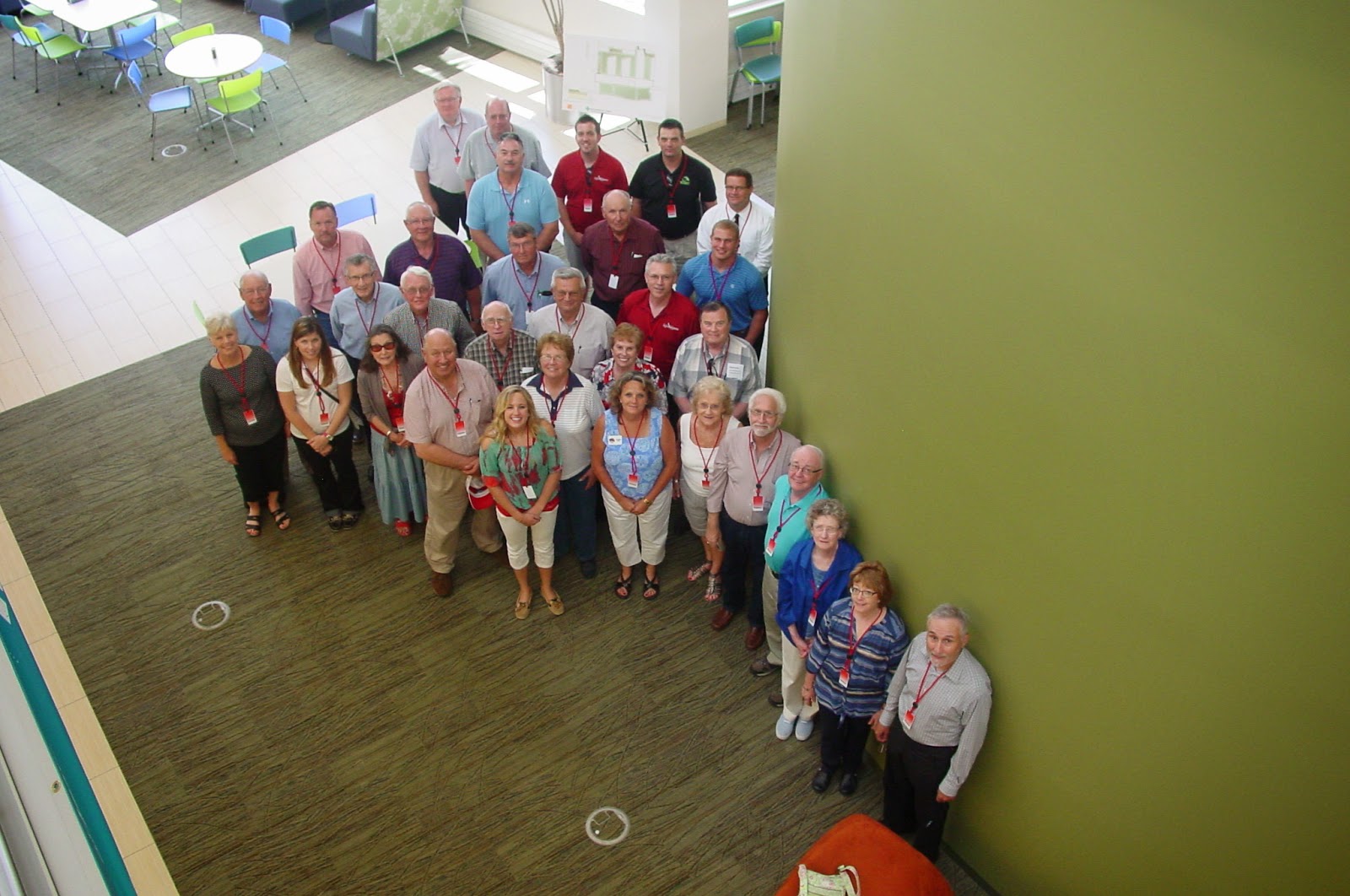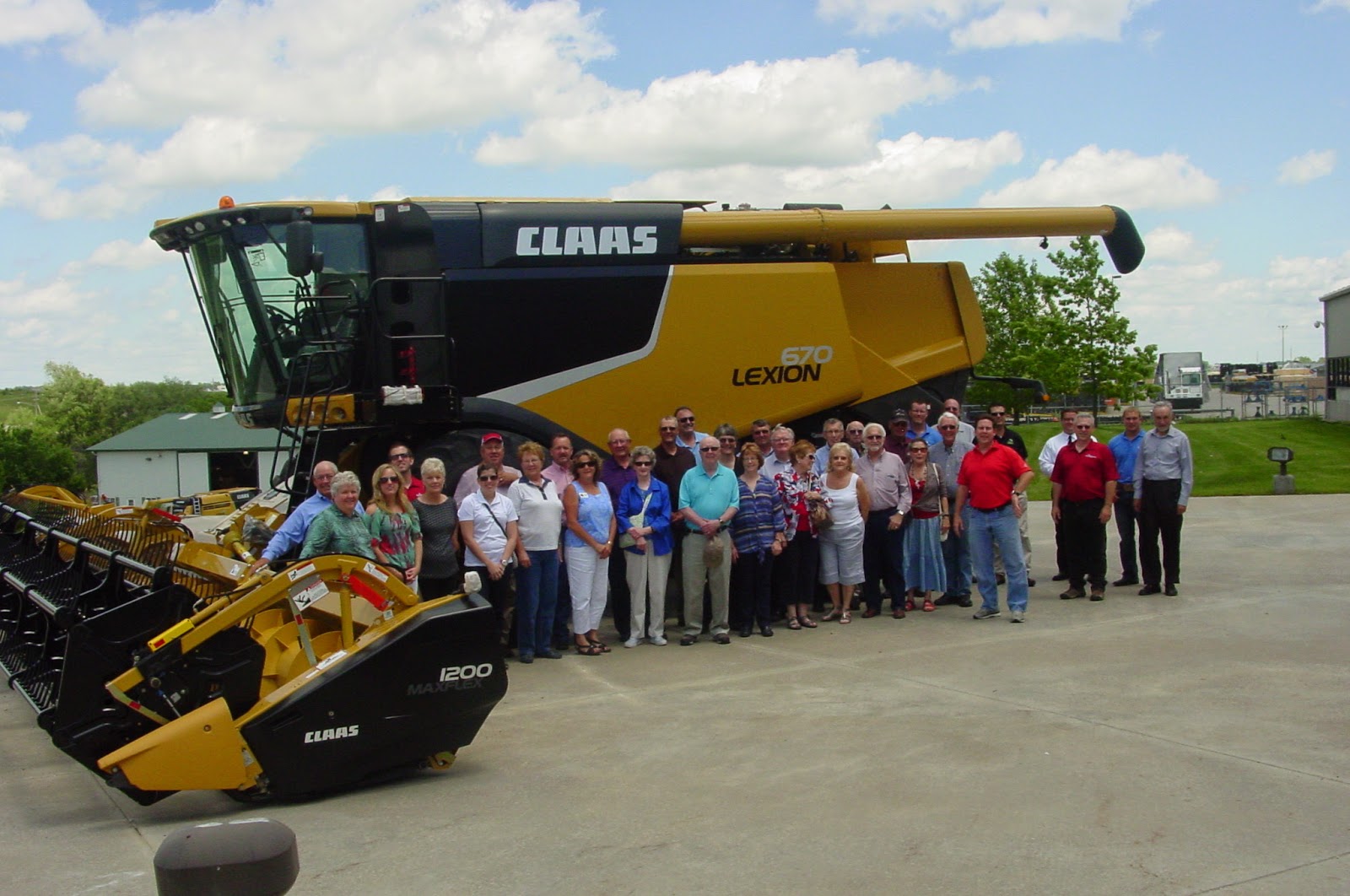 |
| Our group at Farm Credit Services of America |
 |
| Rotella's gave each one of us a loaf to take home |
 |
| Showing off red hairnets while being given directions at Rotella's |
We started the day at Rotella’s
Italian Bakery. Most of us have either seen or bought the Rotella brand of
bread, so it was interesting to visualize the process behind the red, white,
and green packaged loaf. One of the most striking things to me was that this
business started with one man raising his own wheat, grinding it to flour, and
selling the bread to local customers in 1850 in Italy. This business continues
to strive today in the 5th generation. Rotella’s story reminded me
of a lot of our family farm stories- started with one family’s ambitious,
entrepreneurial spirit and has made it through the tests of time with sweat,
persistence, and new technology.
 |
| Future Midwest Labs President, Brent Pohlman, giving us a tour |
 |
| Soil test samples |
Our next stop was Midwest Labs.
This company will test anything related to agriculture, environmental, feed/pet
food, human food, and fuel. It was amazing how much technology is utilized to
find exact data. We even got to see the brand new lab that will be utilized by
the human food department, since human food research has expanded so much that
the department has outgrown its current area.
 |
| One of the FCS entryways |
 |
| A piece of agricultural artwork |
 |
| Our group admiring the LEXION 670- the smallest of the series |
The German company, CLAAS
Manufacturing, was our next stop. Since our agricultural machinery market is
dominated by John Deere and Case IH, I was not very familiar with CLAAS. I
learned that CLAAS makes the majority of combines and tractors in Europe, but
expanded to North America in 1979. You probably associate CLAAS with
Caterpillar since they were run cooperatively from 1999 to 2002. This is why
you have seen CLAAS equipment in Caterpillar’s mustard yellow color. However,
CLAAS has been independent since 2002 and will soon start producing combines in
their actual lime green, red, and white colors. Omaha is the North American
CLAAS headquarters, where we got to watch LEXION combines move down the
assembly line. Only about 40% of the pieces for the combines are U.S. sourced;
the rest of the work and assembly is done in Germany, such as the painting.
However, most of it gets put together in Omaha, which takes about a week. CLAAS
is expanding rapidly in the North American market, and I think that they will
continue to become more and more common to see in our fields.
 |
| NE Brewing Co showing off a few of their brewing barrels |
 |
| Learning about the beer canning process |
The Nebraska Brewing Company, a
much anticipated last stop, was a refreshing end to our day. Our group was
walked through the process of beer making. We learned that the color of the
beer does not indicate the alcohol concentration- it is actually the hops added
to the process. The members of our group enjoyed being treated to a free sample
of the specialty beers. The Nebraska Brewing Company is increasing capacity and
business quickly, and it was exciting to see their progress.
Overall, this was a day well
spent. I think it is important for individuals to get out in the world and
experience things that they are not used to. If this does not happen, it is all
too easy to become narrow- minded instead of considering how actions will
affect the whole industry. The Nebraska Agribusiness Club is a group of warm,
welcoming individuals who have a lot of interesting stories to share. This is
an outstanding professional organization to get involved in if you like meeting
new people and learning about agriculture.

No comments:
Post a Comment